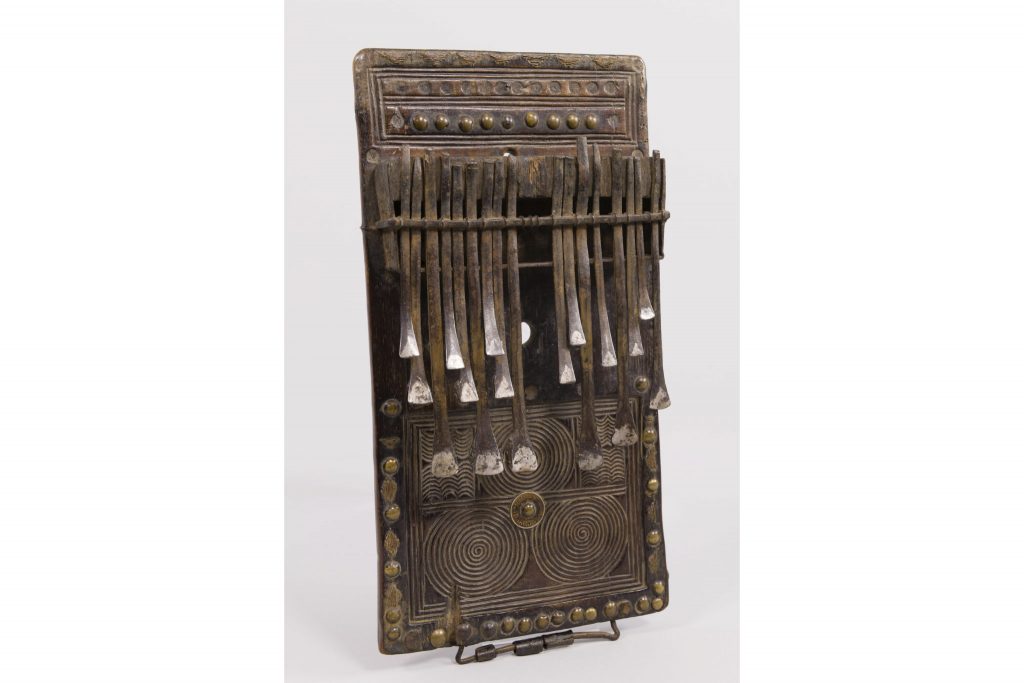Beauty and art on display at UCLA’s Fowler Museum
I can’t say enough for the Fowler Museum at UCLA. It’s set into a little dell beneath Royce Hall, so en route you get to see the sweep of the campus and let your heart be lifted by the old-growth trees, green lawns, and the dear young students making their way in the world.
It’s free.
It’s the perfect size. You can tour the whole thing in an hour and a half.
It has a great gift shop, especially if you like batik throws, corn husk dolls, and change purses made of soda can pop-tops.
There’s always at least one exhibit about a facet of global anthropology, history, geography, or culture you never even knew existed and turns out that you’re dying to learn more about.
Through Dec. 30, 2018, for example, you can catch “Striking Iron: The Art of African Blacksmiths.”

Most scholars believe that sub-Saharan Africans began smelting iron around 2,500 years ago. The artifacts on display range in date from the 17th century to the present.
There are agricultural tools: hoes, sickles, axes, and adzes.
There are blades in the form of spears, axes, knives, and swords that were used both in battle and as insignia of property, prestige, and political power. There are bracelets, neck torques, earrings, hair ornaments, and small-scale iron blades used in bodily scarification by certain sub-Saharan Africans to indicate status, identity, and life transitions.
There’s a thumb piano called the lamellophone from the Shona peoples of Zimbabwe, a nkishi — “power figure” from the Democratic Republic of the Congo — made of cowrie shells, leather, iron, wood, plant fiber, and “sacrificial material,” and a magnificent 19th-century ceremonial blade, featuring a Janus pommel and hammered panels of copper alloy, from Gabon.
The Fon peoples in the Republic of Bénin construct ancestral altars known as asen. These umbrella-shaped staffs, decorated with human figurines, animals, plants, and hanging rattles honor the dead by creating “memory-scapes” of their lives on earth.
The Himba peoples of Namibia and Botswana fashion finely crafted headdresses, necklaces, and belts to celebrate female rites of passage and social status. Young girls wear necklaces of leather cord threaded with tiny iron beads.
At puberty, they don a pendant necklace made from the shell of a venomous sea snail, captured at great peril by men. At marriage, the women are presented with a headdress; at the birth of their first child, a belt. All are carefully treated with a mixture of butterfat and red ochre, as is the skin to protect from the savage desert sun.
Forging iron objects is, rightly, considered a wondrous act, and the blacksmiths in many places are viewed as akin to gods. The startling power, beauty, and sophistication, the fine detail, the thrust of vitality and life, are all the more remarkable in that even today blacksmiths tend to work without benefit of a shop, expensive tools, or safety regulations.
A quote from Polish journalist Ryszard Kapu≈õci≈Ñski’s African memoir, “The Shadow of the Sun,” came to mind:
“Many of my neighbors here have just the one thing. Someone has a shirt, someone a panga, someone a pickax. The one with a shirt can find a job as a night watchman (no one wants a half-naked guard); the one with a panga can be hired to cut down weeds; the one with a pickax can dig a ditch. Others have only their muscles to sell.”
As the commentary notes, “The cadence of [the blacksmith’s] hammer striking red-hot iron echoes the beating of the human heart as it steadily pumps iron-rich blood, keeping us alive.”
But the thing about the Fowler is that you really can’t go wrong, whenever you come and whatever you see.
Through December 9 you can catch “South of No North: Gato Negro Ediciones,” featuring classic texts of resistance by a Mexican independent publisher led by activist designer León Muñoz Santini. “Summoning the Ancestors: Southern Nigerian Bronzes” runs through March 10.
And on long-term view is the exhibit “Intersections: World Arts, Local Lives.”
Here you can learn, among other things, about “The Versatile Gourd,” “Resting the Head” (wooden neck supports from Asia, Africa, and Pacific peoples), and “Capturing Beauty” (Japanese basket makers). Masks, totems, textiles, puppets, dolls, jewelry, and items used in religious ceremonies are also showcased.
One thing not to miss is the video about Sisilia Sii, an Indonesian weaver who specializes in the traditional craft of ikat: an almost unbelievably meticulous, laborious process requiring months of work to produce a single gorgeous cloth.
Sii attributes her ability to work long hours at the loom to chewing betel nuts, a practice that generates a brown-red viscous goo.
If you’re a Somerset Maugham aficionado, as I am, you have read scores of stories featuring this exotic custom, and to observe such an elegant, highly skilled artist looking like an extra from “Night of the Living Dead” made me feel at one with my brothers and sisters across the globe in a whole new way.
Smiling and talking like everything was normal, she looked throughout to have just scarfed down a raw human liver.
But you’ll find your own favorite spots at the Fowler.
Heather King is a blogger, speaker and the author of several books. For more, visit heather-king.com.
SPECIAL OFFER! 44 issues of Angelus for just $9.95! Get the finest in Catholic journalism with first-rate analysis of the events and trends shaping the Church and the world, plus the practical advice from the world’s best spiritual writers on prayer and Catholic living, along with great features about Catholic life in Los Angeles. Subscribe now!

